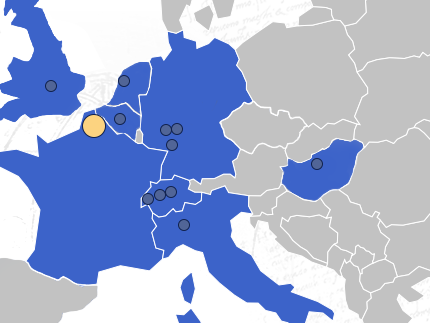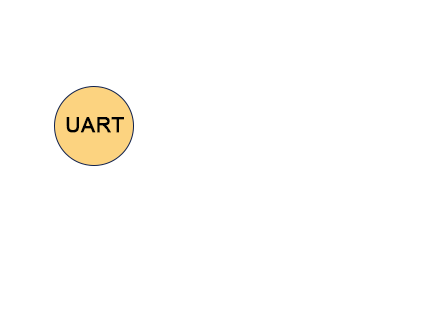 © Manu Friederich / Universität Bern
© Manu Friederich / Universität Bern
ESR 1 vision / project
ESR 1: March 18, 2019; PhD Health Sciences
In vitro models of the BBB and applications in pharmacological and toxicological screenings
Project Results
In the framework of BtRAIN, ESR1, reviewed the traditional use of in vitro BBB models, thereby focusing on one of the most extensively used BBB-related parameters, i.e. BBB permeability. BBB permeability is considerably influenced by different factors that are often neglected when performing interstudy comparisons. The influence of one of these factors, namely brain tissue binding, has been evaluated by incorporation into the traditional in vitro method to assess BBB permeability. A total of 27 marketed CNS compounds were therefore screened using this new method of BBB permeability assessment (Pvitro). Our results reinforce the known influence of brain tissue binding on BBB permeability of compounds that are characterized by a low unbound brain fraction (i.e. high tendency to bind lipophilic entities) and show a considerable better prediction of in vivo brain permeability (Pvivo) using the optimized method (Pvitro) compared to the traditional method (Pe).
In a second part, ESR1 focuses on how to improve our understanding of the functioning of the BBB and of the mechanisms and regulation behind this functioning. This is crucial to further improve development of BBB in vitro models. BBB functioning depends largely on the communication between the BBB endothelial cells (ECs) and other cell types (e.g. brain pericytes, astrocytes, glial cells and neurons). Therefore, the contribution of brain pericytes on BBB formation and BBB maintenance in stem cell-derived brain-like ECs has been studied by a transcriptomic approach. Our results describe the transcriptomic landscape of ECs upon coculturing with brain pericytes. In addition, this data provides intelligence on how and to what purpose in vitro BBB models can be used, as proper characterization of a model is crucial for its use in pharmaceutical CNS drug discovery and CNS drug delivery programs. Finally, the potential of a human in vitro BBB model to predict brain distribution has been evaluated. The unbound brain-to-plasma concentration ratio was therefore measured for 16 marketed CNS compounds using a human in vitro BBB model and a rat in vitro BBB model and compared to in vivo human findings. These comparisons enable to investigate the predictive power of both in vitro models with respect to CNS drug distribution and allow to evaluate the existence of potential species differences between rodents and humans. Our preliminary data supports the use of the human in vitro model rather than the rat in vitro model to predict CNS drug distribution in humans, however, further experiments are necessary to generate more conclusive verdicts.
Altogether, the thesis work of ESR1 has provided intelligence on how to employ different in vitro BBB models to obtain useful information on BBB-related parameters including brain penetration and CNS distribution of drugs.
Title of PhD thesis
In vitro models of the BBB and applications in pharmacological and toxicological screenings
Current position
After 1year and 4 months as a consultant for Avertim, Marjolein is now (11.01.22) working full time for Pfizer as Project engineer.
BtRAIN publications
Contribution of brain pericytes in blood-brain barrier formation and maintenance: a transcriptomic study of cocultured human endothelial cells derived from hematopoietic stem cells. Heymans M, Figueiredo R, Dehouck L, Francisco D, Sano Y, Shimizu F, Kanda T, Bruggmann R, Engelhardt B, Winter P, Gosselet F, Culot M.Fluids Barriers CNS. 2020 Jul 28;17(1):48. doi: 10.1186/s12987-020-00208-1. PMID: 32723387 Free PMC article. 2
Transport Studies Using Blood-Brain Barrier In Vitro Models: A Critical Review and Guidelines. Santa-Maria AR, Heymans M, Walter FR, Culot M, Gosselet F, Deli MA, Neuhaus W.Handb Exp Pharmacol. 2020 Oct 11. doi: 10.1007/164_2020_394. Online ahead of print.PMID: 33037909
Flow induces barrier and glycocalyx-related genes and negative surface charge in a lab-on-a-chip human blood-brain barrier model. Santa-Maria AR, Walter FR, Figueiredo R, Kincses A, Vigh JP, Heymans M, Culot M, Winter P, Gosselet F, Dér A, Deli MA.J Cereb Blood Flow Metab. 2021 Sep;41(9):2201-2215. doi: 10.1177/0271678X21992638. Epub 2021 Feb 9.PMID: 33563079
Mimicking brain tissue binding in an in vitro model of the blood-brain barrier illustrates differences between in vitro and in vivo methods for assessing the rate of brain penetration. Heymans M, Sevin E, Gosselet F, Lundquist S, Culot M.Eur J Pharm Biopharm. 2018 Jun;127:453-461. doi: 10.1016/j.ejpb.2018.03.007. Epub 2018 Mar 28. PMID: 29602020 Free article.
Hosting institution
UNIVERSITE D’ARTOIS, BBB Lab, Arras, France
Supervisor
Maxime Culot
Early Stage Researcher
Marjolein Heymans


